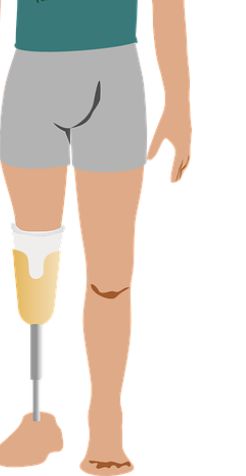Cold Therapy after Amputation

Amputations can sometimes be necessary due to health problems or complications. Injuries, trauma, poor circulation (due to diabetes, narrowing of arteries), and frostbite are some of the reasons that can require amputation of a limb.
Cold Therapy and Recovery after Amputation
The recovery and essential rehabilitation process after amputation can be long and tough. It requires extensive physical therapy along with other therapeutic treatments. One such effective healing remedy for recovery after amputation is use of cold therapy. It can be administered using cold therapy units that are convenient to use and offer optimal healing.
Cold therapy can reduce pain and swelling on the amputated site. It can also prevent complications such as edema, which can occur after amputations. Cold therapy can heal tissues and prepare them for prosthesis.
Ice therapy machine is designed with innovative technology to provide efficient cold therapy. Use of a cold therapy unit can be the difference you have been looking for in terms of benefiting fully from this healing remedy.
Benefits of Cold Therapy
Cold therapy units are designed with advanced technology but with ease of use in mind.
Effective healing –
Cold therapy units come equipped with therapeutic pads that can wrap around the entire area that requires healing and allows cold water to circulate around the treatment site without interruptions and offer optimal healing.
Another advantage of using a cold therapy unit is that it offers ‘dynamic’ healing as opposed to ‘static’ healing provided by traditional ice packs. Dynamic healing means there is steady movement of water for better heat transfer. Efficient heat transfer occurs when differences in temperatures is to quite a degree and with efficient flow of cold water on the treatment site. Healing can accelerate with better heat transfer on the treatment area.
Efficient use –
With use of advanced and improved technology, there is no risk of infections due to dripping of water on the amputated site. Now, this is a risk when ice packs or frozen pea bags are used for cold therapy. When it comes to surgical sites, it is important to keep them free of infections. Infections can hinder the recovery process and also cause complications in some cases.
Ice machines can be used for prolonged periods without needing to replenish ice or risk of side effects. The temperature remains comfortable enough to tolerate even after hours of use. The fact that it can be used for prolonged and also long-term use means that a cold therapy unit can help manage pain that can occur with prosthesis use.
Pain management –
Using prosthesis requires practice to reach a desired level of comfort. Pain can occur on the amputated site due to prosthesis even after its regular and habitual use. Cold therapy can be beneficial in such cases to reduce pain and swelling from prosthesis use and help people with amputations to continue with their normal routines with greater comfort.
Pain reduction with cold therapy means less reliance on medications. Use of pain medication is not recommended for long-term use. It is simply not a viable option to use pain reducers to manage discomfort from use of prosthesis. Even before prosthesis fitting, pain can occur on the amputated site. Only sporadic use of medicines to relieve pain is recommended by doctors and it is easier to manage pain and rehabilitation with cold therapy and physical therapy.
Convenient handling –
Using cold therapy units is easy and convenient. These devices are fitted with self-priming pumps, which allow users to simply fill in the water and ice and plug in the machine. There is no need to replenish ice in quick succession and there is no hassle of cleaning any dripping water.
The pad itself is comfortable to use on amputated sites. You can use the machine and relax while the cold therapy heals the body.

